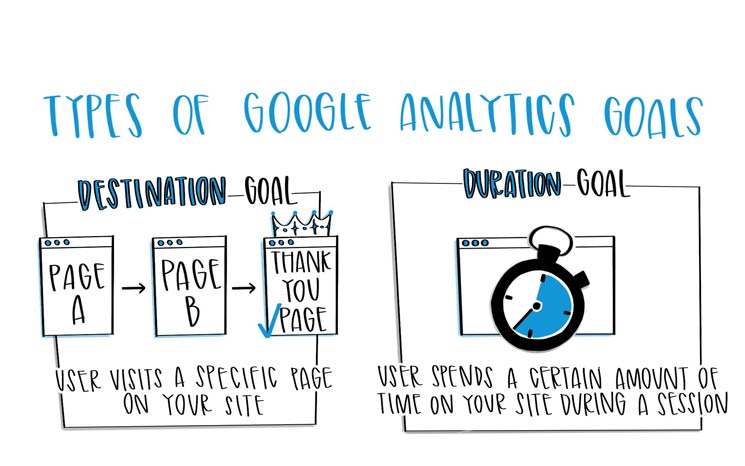Figure out What Data Is Google Analytics Goals Unable to Track
Figure out What Data Is Google Analytics Goals Unable to Track
Blog Article
Revealing the Blind Destinations: Comprehending What Google Analytics Goals Can not Gauge
In the realm of electronic analytics, Google Analytics stands as an effective device for tracking and assessing on-line customer interactions. Nonetheless, in the middle of its durable abilities, there exist unseen areas that typically evade measurement. Comprehending what Google Analytics objectives can not measure is vital for acquiring a detailed view of user actions and involvement. As we look into the complexities of these dead spots, we discover an intricate internet of uncharted regions that hold beneficial insights right into individual actions and inspirations, challenging standard wisdom and losing light on the restrictions of our data-driven understanding.
User Actions on External Operatings Systems
Recognizing just how individuals communicate on exterior platforms is essential for optimizing on the internet techniques. External platforms, such as social media sites networks, recommendation sites, and on the internet forums, play a substantial duty in driving traffic to a firm's site. By examining individual behavior on these systems, organizations can acquire beneficial insights into the effectiveness of their advertising and marketing efforts and the preferences of their target audience.
One key aspect of customer actions on outside systems is the reference resource. By tracking where the customers are coming from, companies can recognize which systems are driving the most traffic to their internet site. This information can aid firms assign their resources more successfully, focusing on the systems that produce the very best outcomes.

Offline Conversions and Communications
Examining customer habits on outside platforms supplies beneficial insights into online techniques; nevertheless, considering offline conversions and interactions is similarly crucial for a comprehensive understanding of a firm's overall performance. Offline conversions, such as in-store purchases or phone inquiries, play a substantial role in several companies' success.

Attribution Beyond Last Click
When diving right into the realm of digital marketing analytics, it ends up being necessary to look past the solitary touchpoint of the last click for an extra thorough understanding of acknowledgment. While Google Analytics gives important insights right into customer behavior, depending entirely on last-click attribution can be restricting - what data is google analytics goals unable to track. Attribution models that go beyond the last click supply a much more nuanced sight of the client trip, considering all the touchpoints that cause a conversion
Attribution past the last click enables marketing experts to assign credit history to various interactions along the conversion path, offering a clearer image of the efficiency of different advertising channels. By discovering multi-touch acknowledgment models such as linear, time degeneration, or position-based acknowledgment, organizations can much better allot their marketing budgets and maximize their methods for maximum influence.
Understanding the influence of each touchpoint in the conversion process is vital for making notified decisions and making best use of ROI. By accepting acknowledgment past the last click, companies can acquire deeper understandings into customer behavior and tailor their advertising and marketing efforts better.
Cross-Device and Cross-Browser Tracking

Likewise, cross-browser monitoring enhances cross-device tracking by catching individual actions as they switch over between different web internet browsers. Comprehending how customers communicate with web sites on various web browsers can help online marketers enhance their on-line experiences to ensure consistency and performance throughout different platforms.
Qualitative Data and Customer Intent
Comprehending customer intent through qualitative data analysis is essential for creating targeted digital advertising and marketing methods that reverberate with the demands and preferences of the target audience. Qualitative information provides insights into the 'why' behind customer activities, clarifying inspirations, emotions, and choices that measurable data alone can not capture. By analyzing individual feedback, comments, and interactions, marketing experts can uncover beneficial info concerning user intent, permitting them to tailor their messaging, content, and offerings to better align with what their audience is seeking.
Qualitative information additionally aids in recognizing the context in which users engage with a website or app. This contextual understanding makes it possible for online marketers to produce even more appropriate and individualized experiences, eventually driving higher engagement and conversion rates. By diving right into customer intent via qualitative data evaluation, businesses you can try these out can get a much deeper understanding of their target audience, causing extra efficient advertising strategies that fulfill customers' needs and expectations.
Verdict
Finally, Google Analytics goals have limitations in measuring customer habits on outside platforms, offline conversions, acknowledgment beyond last click, cross-device and cross-browser monitoring, and qualitative information connected to user intent. what data is google analytics goals unable to track. It is essential for organizations to be familiar with these blind places in order to supplement their information analysis with other tools and techniques to obtain an extra comprehensive understanding of their target market and boost their total electronic advertising and marketing strategies
By evaluating customer habits on these systems, organizations can acquire valuable insights into the effectiveness of their advertising initiatives and the preferences of their target audience.
Examining individual habits on outside systems offers valuable understandings right into on-line approaches; nevertheless, taking into consideration offline conversions and interactions is similarly vital for a detailed understanding of a business's general performance.In electronic marketing analytics, relocating beyond last-click try this web-site acknowledgment to check out cross-device and cross-browser tracking is essential for acquiring a holistic understanding of customer interactions throughout different systems and gadgets. By assessing user comments, remarks, and interactions, marketing experts can discover useful information concerning customer intent, enabling them to customize their messaging, content, and offerings to better line up with what their audience is looking for.
By delving into individual intent via qualitative information evaluation, businesses can gain a deeper understanding of their target audience, leading to more efficient marketing techniques that satisfy individuals' assumptions and demands.
Report this page